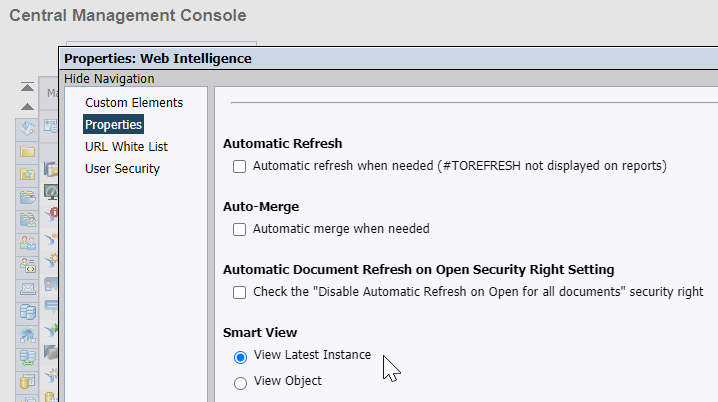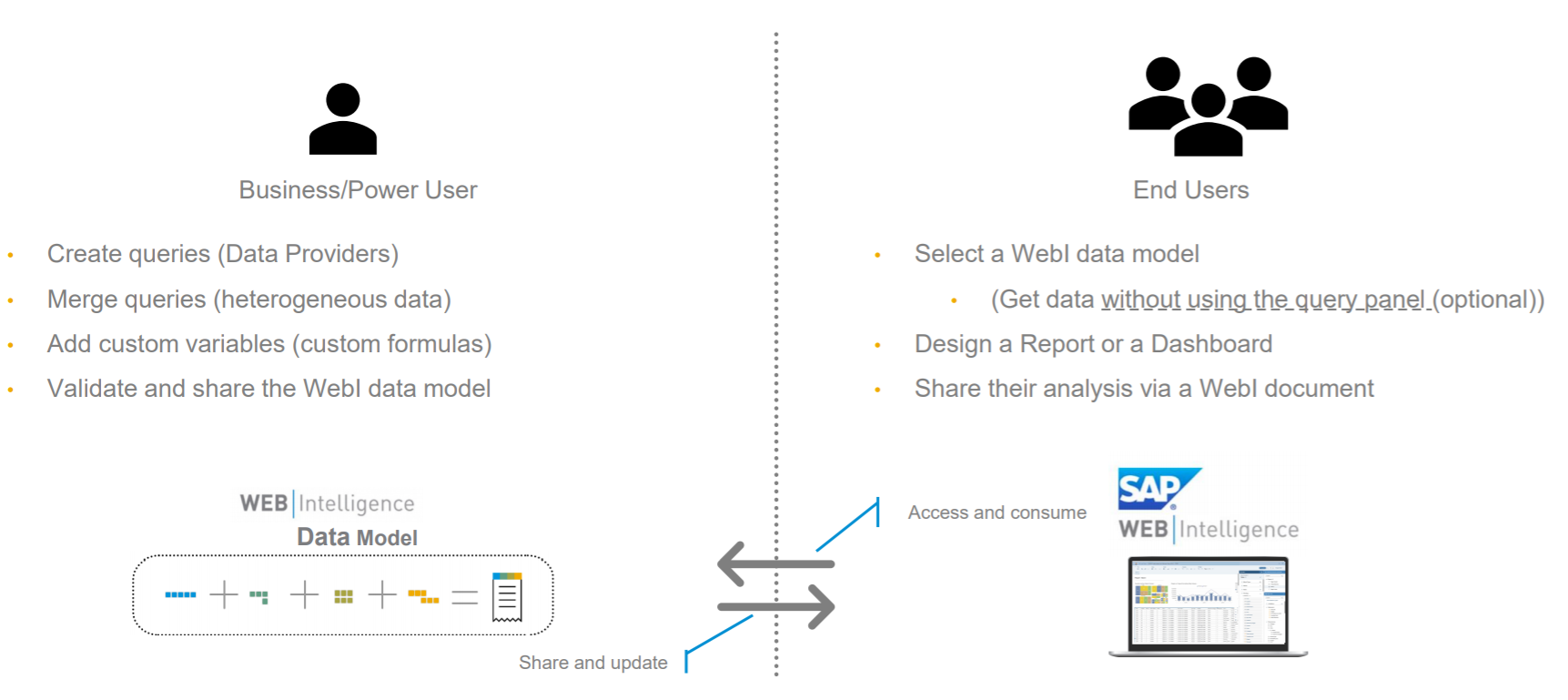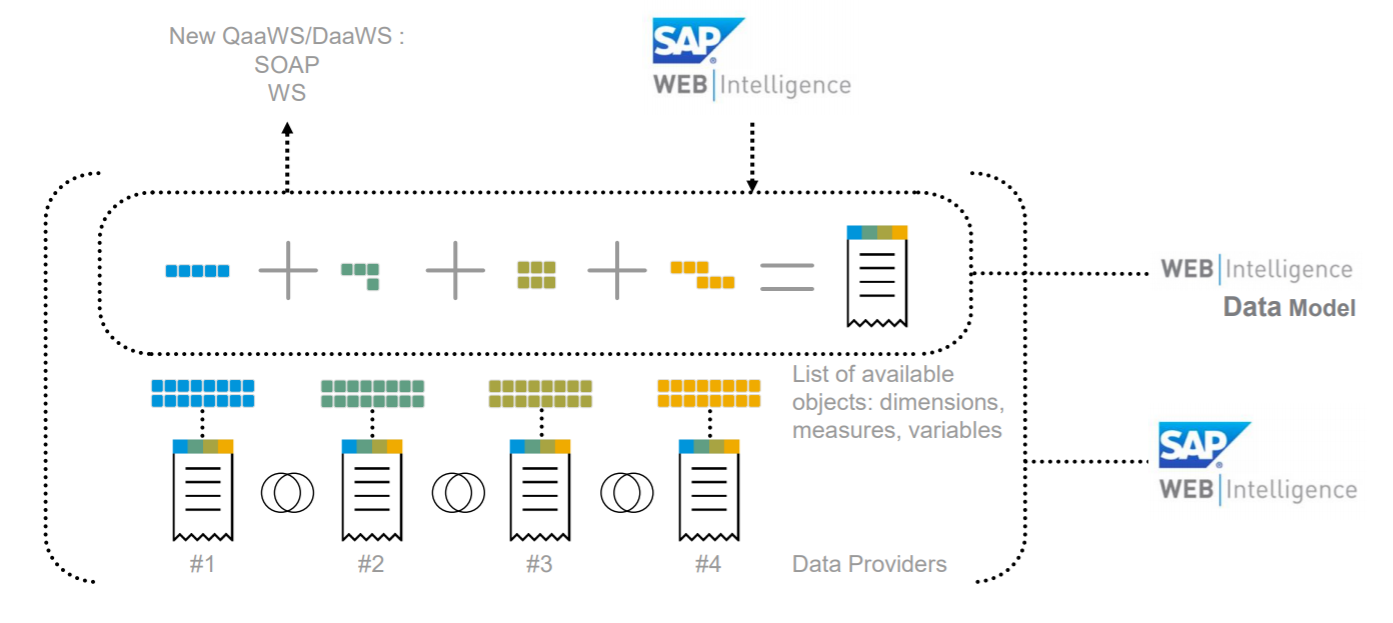Organizations across a variety of sectors are already making the move towards cloud-only solutions for data storage & analytics and taking advantage of the many benefits such solutions bring in terms of convenience, access, and reliability.
It is important to remember however that cloud-only environments are not suitable for all business types, and that depending on the specific security requirements or on-premise infrastructure, moving all functions into the cloud is not a realistic prospect for some.
Happily, a best-of-both-worlds scenario exists in the form of a hybrid data solution, which allows sensitive data to remain on-premise within a controlled environment while computing resource can be located in the cloud. With the right connectors, SAP BusinessObjects can function as an enterprise Business Intelligence (BI) Platform on-premise and utilize SAP Analytics Cloud for analytics. Today we’ll look at an important development to this model, using Web Intelligence (WebI) Data as a source.
With the recent launch of SAP BusinessObjects 4.3, a new source option has been added, called “WebI Data models” or also “WebI as a source”. At Clariba we have deeply analyzed this feature not only on the functional side but also comparing it to our expectations, laying out its roadmap and advancing its role in imminent hybrid analytics deployment options. Here’s how it works:
Quick demo
From FIORI BI LaunchPad 4.3 > Applications > WebI we can create a new WebI document, and one of the options is to Select WebI document as a data source:
One of the WebI samples can be chosen by clicking on it:
Right after, a WebI data model is shown, based on the existing queries, objects, variables, and merged dimensions. We can pick up three dimensions and two measures for a test:
Once we click on Run, we get a raw table with the result, based on the saved data of the source WebI:
This is a WebI sourced by another WebI data model, that we can now save. Using this simple idea, after a few tests, we reach the following conclusions:
Main features and usage
The main items are summarized as follows:
It re-uses the WebI data model from another WebI document, so it can use already created objects, variables, merged dimensions, etc. For our understanding, this is the source model used in the above example that appears if we edit the original WebI document:
It points to a “static source”, which means that the original source will not be refreshed at the time of refreshing the sourced WebI. This static WebI source can be:
The source WebI itself
The last refreshed instance (very useful!)
This can be configured as a platform setting for everyone, at the CMC level in Applications > WebI > Properties using the Smart View feature as “View Latest Instance”
Business Security Profiles apply: For example, a power user might schedule an extended source dataset and then a restricted user could retrieve a filtered dataset. This is using the View Time Security introduced in last SAP BusinessObjects BI 4.2 SP 06, so end users will not need access to a whole dataset.
Works well with Refresh on Open, i.e. it purges the dataset when it is saved so it does not store saved data that could be seen by unauthorised users.
It is also possible to concatenate two or more WebI documents, so a WebI sourced by another WebI that is itself sourced by another WebI is possible.
In terms of usage, an approach can be that a developer prepares the WebI Data model while an end-user consumes it, according to the following diagram:
Wish list
The following ideas are probably not needed but some are already logged in the SAP backlog and they might in the future become part of the product roadmap:
The ability to perform a “cascading refresh” allowing us to pull real-time live data. Currently, this is not happening, and the reason is that the source is a static WebI document where the static data from the cubes and the “dictionary” with the objects and variables names are used. It seems it was never the idea to have the underlying dataset refreshed, but if that was ever possible, it would be very powerful.
The ability to query from a WebI document block (table):
Those who have ever used a WebI document with tables as a source for dashboards will recognize the power of WebI direct formulas, filters, and merged dimensions within a WebI block, which have been excluded from the new WebI data models.
Therefore, there will be cases in which a single query might not provide the insights we need for our visualizations. As a workaround, detractors of the WebI block as a source might propose us to change our WebI logic and create many small queries containing the needed data, emulating the block behaviour.
Moreover, we have two additional comments:
Notice that dimensions that are merged or geography hierarchies are not highlighted as such when running the query, so previous knowledge of the WebI data model is advised in order to avoid e.g. an unexpected incompatible objects message.
When using SAP Business Warehouse (BW) as a source the BW restrictions cannot be used for Row Level Security. So far, the only way to restrict is by using security from UNX Universes and profile values.
Hybrid Experience
Using SAP WebIntelligence 4.3 together with Live Data Connector (LDC) 3.1 is bringing the expected ability to feed SAP Analytics Cloud visualizations using WebI as a source, through an https web service engine suggested in the following diagram:
The main highlights of this WebI connector using LDC 3.1 from SAP Analytics Cloud will be featured in a separate article.
Benefits and Conclusions
This solution has the following registered advantages and benefits:
Re-uses existing Web Intelligence documents to build new information
Creates and shares the business semantics, and associated result sets
Enforces consistency and update of information:
trusted BI
lower Total Cost of Ownership (TCO) of updates
As we can foresee, the SAP BusinessObjects 4.3 platform will become a factory where data will be processed and prepared for both WebI and SAP Analytics Cloud to take advantage of it. SAP BusinessObjects has always been one of the most sophisticated enterprise BI platforms in terms of refresh scheduling, information distribution, and security options, so the chances of success for hybrid SAP Analytics scenarios are very high.
While real-time or high transformation options are not quite ready yet, the foundation is already available to start preparing for the jump to hybrid and eventually 100% cloud environments, and a key innovation, LDC 3.1 is fundamental in triggering that change.
We’ll be keeping a watchful eye on the next updates for the features we have outlined above, which will further strengthen the business case for the adoption of a hybrid model, as well as extending its functionality.
In the meantime, let us know if you have any comments or questions about the existing features we discussed!









